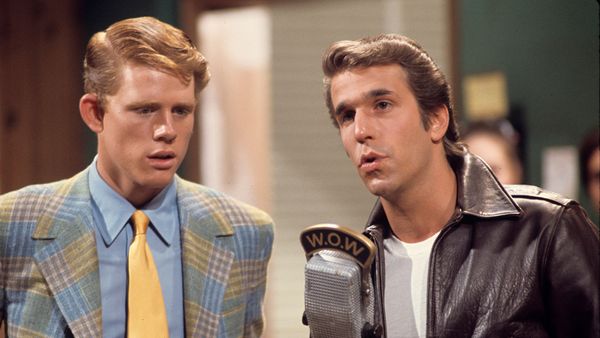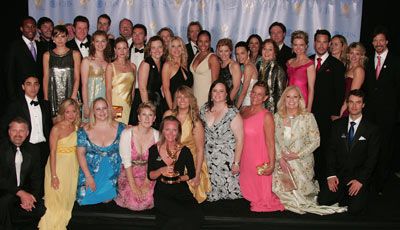The studio audience is hushed as a woman seated on a couch at the center of the stage begins to cry. As she sobs, the talk show's host presses on, asking questions so personal you can't believe the answers are being revealed on TV. Still, you can't help but watch the story unfold, feeling a little ashamed yet overwhelmingly intrigued. Behind the scenes, the show's producers are feeling the thrill of success. This drama is nothing but pure talk show gold.
A talk show is, at its most basic, a televised show organized around guest interviews. There's a host or a panel of hosts, and the format usually adheres to strict time constraints. The typical talk show is one hour in length, including commercial breaks. Most talk shows are filmed before a live studio audience, but few shows air in real-time. Often, the shows are recorded in batches and scheduled to air in the future.
Advertisement
Talk shows are nothing new. In fact, they've been around since families gathered in front of furniture-sized radios in 1920s living rooms. It wasn't until the 1960s, however, that the precursor of modern televised talk shows took hold. That's when Phil Donahue grabbed a mic and made audience members the stars by asking their opinions about guests or current events. It may have been a move born out of desperation; Donahue was having trouble attracting celebrities to the Dayton, Ohio studio in which his show was taped, but it turned out to be a stroke of fortune. Not only did members of his audience relish their moments of fame, but the concept was well-received by viewers across the country.
The format Donahue employed has changed little since "Conversation Piece" (later named "Phil Donahue") aired in November 1967. The formula uses controversial material or guests to prompt a public service-style discussion. This approach is alive and well on many talk shows today, where the content covers everything from celebrity scandals, economic woes and public health scares to sexual abuse, human rights and civic causes [source: Hume].
Some of today's talk shows still have a single host focused on guest interviews, while others have a panel of hosts who have adopted a "variety show" style by including cooking, fitness, health or product segments [source: Museum of Broadcast Communications].
Other talk shows take a more cerebral angle, focusing solely on economics, politics or literature. "Wall Street Week" is an example of a talk show built around financial topics. It aired on PBS from 1970 to 2005 and garnered more than 4 million weekly viewers in its prime. In 2014, the show was revived with host Susan Krakower [source: Lopez].
Thanks to the Internet, nearly anyone can host their own talk show. For example, "This Week In" is a network of web-based talk shows that include news, guest interviews and interactive audience segments, ushering in a new era of talk show options.
Advertisement



